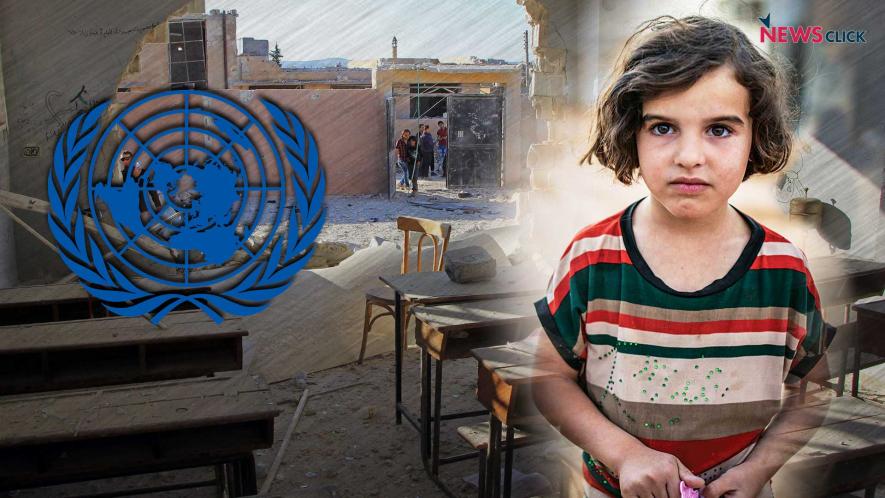Twenty-Seven Million Children Go Without Education in Conflict Zones, says UNICEF Report

Newsclick Image by Nitesh Kumar
A UNICEF report released yesterday stated that 27 million children were out of schools in conflict zones in 2015. This estimation has gone up by two million. A UNICEF report in April had stated the number to be 25 million, but it is now estimated to be 27 million.
These children belong to primary and lower secondary school age groups and come from 24 conflict-affected countries. Girls are 2.5 times more likely to be out of school compared to boys. The report says that the low level of education puts these children at increased risk of exploitation. 90% of uneducated adolescents moving across the Central Mediterranean route to Europe reported exploitation, as opposed to 77% of children with primary education, and 75% of children with secondary education.
Without an education, children risk losing their futures, said the report. The number of child migrants rose by 21% from 2005 to 2015. Schools are often targets of attacks in conflict-ridden areas, making the act of going to school itself a risky one. In countries such as Iraq, Libya, Nigeria, Sudan, Syria, and Yemen, school infrastructure has faced heavy damage from disaster and conflict, adversely affecting the availability of resources.
Migration caused by conflict has also increased the incidence of child labour. Due to poverty, children are forced to prioritise work over education. Child marriage also seems to be on a rise when children are uprooted from their homes.
Refugees are five times more likely to be denied education than other children. On moving to a new country, plenty of legal barriers need to be crossed before children can access systems meant for them. Even if they manage to do so, language poses another major problem. A major chunk of child migrants go to countries where schools do not teach in languages they are familiar with. Accessing education is thus made even harder. Other social problems faced by children when entering schools in new countries are xenophobia, exclusion, and stigmatization.
Only 50% of all refugee children are enrolled in primary schools, and less than 25% are enrolled in secondary schools.
The fourth goal on the United Nations list of goals for sustainable development is ensuring inclusive and equitable quality education opportunities for all. This goal can only be achieved if a sustained effort is made to provide education opportunities to migrants and refugees, with emphasis on reduction of legal barriers by governments of all countries, and initiating discourse to reduce social stigma.
Get the latest reports & analysis with people's perspective on Protests, movements & deep analytical videos, discussions of the current affairs in your Telegram app. Subscribe to NewsClick's Telegram channel & get Real-Time updates on stories, as they get published on our website.
























